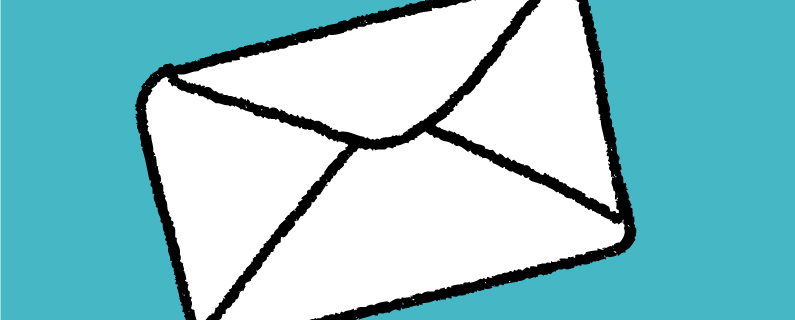Web design and graphic design professionals love it when clients come to the table with design ideas. Of course, it’s their job to bring design ideas too. But when you’re both immersed in collecting and sorting ideas, the design process goes so much smoother.
You don’t want to be the silent client in the corner, getting dragged through options you hate because you can’t or won’t offer your own ideas or feedback.
The tough part? Coming up with ideas. It’s easy to paralyze yourself if you open a blank document and type IDEAS at the top. However, you don’t have to sit and sweat forever.
Here are a few suggestions you can use at your desk to discover good stuff, both at your own desk and (shocker!) going out in the real world.
Critique Your Current Web Design
So, you’re going out for a new web design. The current one is old and stale. Where do you start in the search for new ideas? You start with your own stale site.
Ask yourself, what’s wrong with the current web design? Make a list of pain points and problems. Then take each item on that list and ask your web designer’s favorite question: why?
Why does the homepage look old? Why is the About page boring? Why does the footer make you cringe? The answers start simply as “design trends are different now” or “we don’t sell that product anymore” or maybe “I never liked how it looked anyway.” Then ask why again for any answers that still seem vague.
You may discover your true reasons go deeper. Maybe “we’re going for a certain certification and need to present ourselves a certain way” or “our actual approach to sales is more in-your-face” or more subtle. Start the idea creation process by looking at what you already have. What will you salvage and what will be retired?

Ask For Your Designer’s Portfolio
Once you’ve spent time critiquing your current site, ask your web designer to show off their portfolio. What examples of similar work do they have to show you? Have they come across your challenge before? How did they solve it then? Would they solve the challenge differently now?
You might have seen some of their portfolio work before as you evaluated different firms before choosing one. This time, ask your web designer to show you at least five web design examples along with brief descriptions of how they relate to your project and what you should be looking for as you visit each link.
Need a starter? Check out Roundpeg’s portfolio. We’ve got tons of website and print designs to browse.
At this point, you’ve examined your current website as well as the current work of your web designer. There might be enough material there for a solid start. But I encourage you go a little further. Step beyond your sphere.

Creep On Your Competitors
Unfortunately, you’re probably also trying to think how you can step beyond your sphere without spending the whole morning. What can you do with just a few clicks to generate a bunch of ideas and notes? The answer is: a lot!
Start with a review of your competitors’ websites. List the names of everyone stealing your business, name everyone who shows up in Google next to you. Then go check out their website, their Facebook page and other online channels.
What do you like about what they’re doing? What do you dislike and want to make sure you avoid? Take a screenshot and describe your likes and dislikes with specific details.
Try to find three to five competitors in your local area to get a sense of who your new web design will be up against. Next, expand your search to include people in your industry working in other cities and regions. What are they doing? Anything good? Include them in your notes.
I think it’s fascinating to Google your industry name and a city name far away. Maybe things look really similar, maybe you’ll find something you’ve never seen before.

Search by Theme
What next? Did the trail go cold searching for competitors? It’s time to switch things up. Make a short list of industries similar to yours or that serve the same customer base. Then use the industry names along with a city name to search. For example, “plumbing supplies Kansas City.”
Follow the same process of exploring their web designs like a customer would, taking notes along the way.
Another path to try is using personal interests and hobbies to guide your search. While this search may not tell you as much about your business’ audience, looking at these familiar brands in a new light could yield novel ideas and approaches.
Or at least it’s a way to give yourself a mental break without straying too far off-task.

Browse Brand New
Your favorite designer probably knows about Brand New already. This website is a prominent journal of corporate and brand identity design. It’s fun on its own just to look at all the interesting logos (both interesting good and interesting bad) that people make all around the world.
But I really bring Brand New to your attention for the work that goes along with all those logos. Updated or redesigned branding often requires a new web design to launch successfully. Since Brand New’s articles talk about new branding, many of them also link to the related websites.
Surfing Brand New is a great way to find the latest innovative web designs for both serious, multi-national brands as well as the wilder designs favored by startups.
Now we’re having fun, right? You have no idea. Time to push off from your desk and head into the real world for a look at commercial art and design across a variety of mediums.

Watch a Design Documentary
Have you seen “Art & Copy?” This 2009 documentary is about advertising agencies and the careers of prominent figures in the industry. Along with a fun review of America’s ad-driven pop culture, you get to see examples of award-winning writing and design from the past and present. It’s a staple of college marketing and advertising classes.
Watching “Art & Copy” will get you fired up to make some great stuff for your own company. As you watch, pause the film and note the ads and brands that catch your eye. The film is available to stream on iTunes and Amazon.
Another option available only on Netflix is a new series called “Abstract: The Art of Design”. Like “Art & Copy,” you’ll meet the creatives designing our world. Each episode features a creative from a distinct discipline or industry. Make sure you hit up episode six with acclaimed designer Paula Cher. She’s worked with global brands like Microsoft, Target and The Daily Show.
You’ll end up thinking you’re in the wrong industry with all the fun designers seem to be having out there. While it may be too late to go for that art school or architecture degree, everyone can develop ideas and opinions about design. Most of us carry those around all the time, we just haven’t examined them.
The next activities are designed to get you thinking about the art you see all around. Keep an open mind and use this time to think about tone and voice. How do you want to present yourself? What feels right?
Speaking of emotions, our first stop will hit you right in the feels.

Pick Out Greeting Cards
Silly right? But a tour through your local card aisle is a great way to see hundreds of illustrations, photographs, fonts and writing styles. Try the Just Because and Birthday sections for a good general mix. Avoid Wedding and Sympathy cards because the emotions there are so specific.
However, if your business is related to either of those life events or any of the others you can buy cards for, these sections can be super useful.
Pick out cards that appeal to you. Think about your target customer and pick out cards you think appeal to them. Use your phone’s camera to snap pictures of items you want to refer to later. You don’t necessarily need to buy these cards. Hopefully you walk out with some notes about what you liked and disliked. When you get home you can do the hard work of asking “Why did I like that? What did it do to appeal to me?”
Maybe greeting cards aren’t your thing. What about music?

Go Vinyl Shopping
The idea here is the same as in the greeting card aisle. Your local used record store should have a selection of new releases as well as a wide inventory of used albums. Just like before, use the store like an art gallery. Look for things that speak to you, designs that are doing something right. You can figure out why later.
Like a hummingbird skimming from flower to flower to find the sweetest nectar, browse the stacks for album covers with a photograph you like, or an illustration. You might even look for artists with an attitude and a voice that matches your own, or that you aspire to be like.
If you’re not artsy, think about the artists behind those album covers. If your company was a famous musician, who would it be?
Maybe you’re fun and free like “1989” Taylor Swift. Or you could be like Stevie Wonder: inventive, charming and and socially conscious.
How are your web design notes coming? Hopefully you’ve accumulated a diverse collection of thoughts and ideas.
Freestyle Draw and Sketch
Finally, it’s time to synthesize these notes and thoughts into something useful for your web design project. While you’re obviously paying a web designer to do the true work of producing a polished work, making your own drawing or written outline will clear your head and clarify your thoughts before the web design kickoff meeting.
Did any of these inspiration engines work for you? Do you do something different to get the juices flowing? Share your ideas with @roundpeg on Twitter.
[su_email_signup]